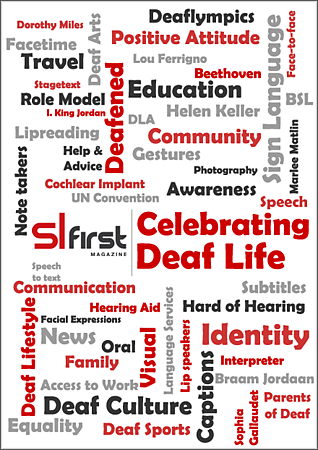Stage, Theatre & TV17th October 2013
Signed and Captioned Performance at the Theatre
Theatres have taken great strides in opening up some performances to people who are deaf, here Jeff discusses some of those developments
 As a theatre goer, I have often enjoyed watching theatrical performances in London’s West End and in Cardiff’s ‘Wales Millennium Centre’. As I am Deaf, some of you may wonder how I have access to the full performance.
As a theatre goer, I have often enjoyed watching theatrical performances in London’s West End and in Cardiff’s ‘Wales Millennium Centre’. As I am Deaf, some of you may wonder how I have access to the full performance.
For a good while, Deaf and Hard of Hearing people have enjoyed having a choice of going to see either an interpreted or a captioned performance. Both offer a very different experience for Deaf and Hard of Hearing people. Sadly, the availability of captioned and signed performances seems to be changing. Increasingly, I have noticed that having a choice is no longer an option for many Deaf and Hard of Hearing people because more theatres are turning exclusively to captions.
It seems that the primary factor behind this trend is cost. Many theatres in the UK are experiencing cuts in their revenue with less people going to the theatre. Consequently, there is less money to go around and that is bound to have an impact. Pleasingly, many theatres remain committed to ensuring that Deaf and Hard of Hearing people can enjoy a wide range of performances through captioning, but the reduced income does seem to have had an impact on Deaf British Sign Language users, many of whom would prefer to watch performances interpreted into their first language.
Whilst I understand the financial constraints, it is important for theatre management companies to understand that this is not simply an issue of being able to share the spoken word with a deaf audience. An interpreted performance will translate the English text into British Sign Language, including all of the hidden meaning, humour (seems challenging I know!), songs and any sounds that happen on and off stage. Consequently, interpreting a theatre performance is a very demanding assignment for an interpreter to undertake, as they translate all of the dialogue, using their body language to show the character and how they behave.
 Using an experienced BSL interpreter, a Deaf audience receive a ‘complete’ translation of the play, adding to the enjoyment of the show. Of course, this isn’t everyone’s choice as it can make it difficult for the audience to draw their own conclusions and meaning form the show. Some people prefer to observe a performance in its ‘raw format’, which usually means accessing the performance in its original language. The most important issue is that the audience should have the choice.
Using an experienced BSL interpreter, a Deaf audience receive a ‘complete’ translation of the play, adding to the enjoyment of the show. Of course, this isn’t everyone’s choice as it can make it difficult for the audience to draw their own conclusions and meaning form the show. Some people prefer to observe a performance in its ‘raw format’, which usually means accessing the performance in its original language. The most important issue is that the audience should have the choice.
This would be the same if the performance’s original format is in British Sign Language and the hearing audience are listening to the translation from British Sign Language to English. It is possible that they might lose out on some of their own interpretation.

Captioned performances offer Deaf and Hard of Hearing people access to performances via written English. This includes any music and on and off stage sounds. This is similar to reading a book and allows an audience to come up with their own ‘opinions’ by responding to what is happening with any hidden meanings ‘exposed’.
However, as with BSL translation, captioned performances are not for everyone. Those who attend this type of performance are usually confident and comfortable with accessing the performance via written English.
Article by Jeff Brattan-Wilson
posted in Entertainment / Stage, Theatre & TV
17th October 2013





